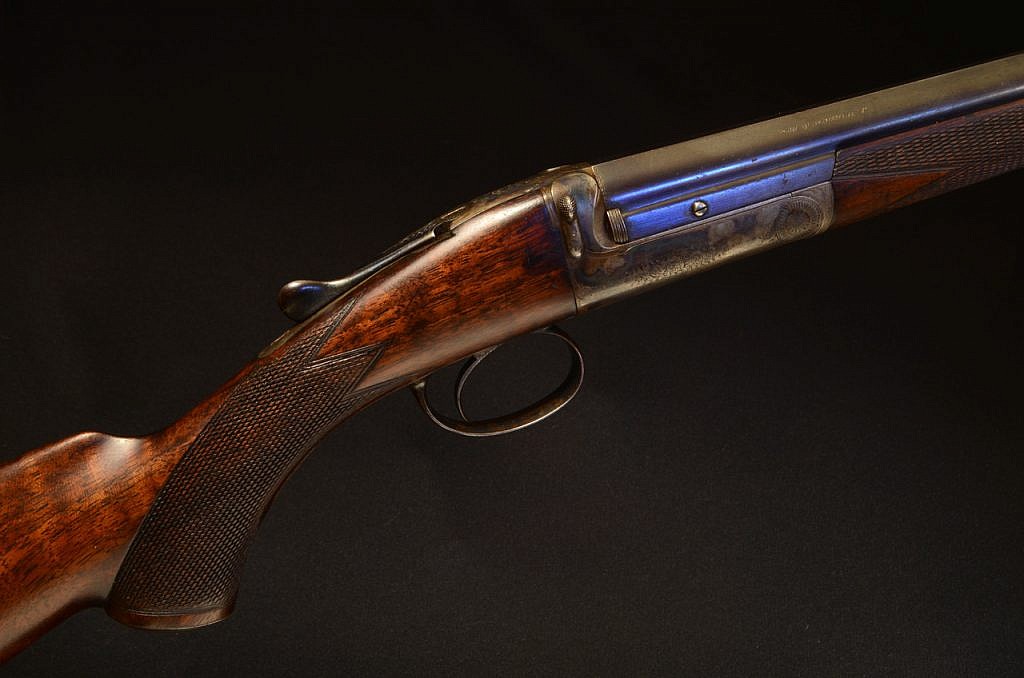
by Terry Wieland
Leave us begin with an explanation of what, exactly, a rook is — aside from the powerful, crenallated chess pieces that give the corners of the board the appearance of a medieval castle.
A “rook,” as in “rook & rabbit” rifle, is a black bird, found in England, related to the crow. Remember the nursery rhyme “four and twenty blackbirds, baked in a pie?” Those were rooks, and yes, young rooks are very tasty, and yes, they still do get baked in pies.
A century ago, the opening day of rook season (May 15) was a major event in the British sporting calendar, not quite on par with the Glorious Twelfth, but up there. For the next few days, everyone with a rifle, from the Prince of Wales to the kid down the lane, would be out stalking the rookeries. These were nesting trees favored by the adult rooks, who like to clan together. When young rooks hatch, they first climb out onto the branches and there they sit, getting their nerve up to try an experimental flight or two.
From a safe distance — 50 to 75 yards — the hunter would crouch with his rook rifle and try to pick them off the swaying branches. I should add that shooting rooks with a shotgun was considered, in the memorable words of David Baker, “a cad’s sport.” This all took place within a short window of time, because once the rooks reach adolescence, they are no longer edible.
At that point, both His Royal Highness and the kid down the lane turned their attentions to the main prey of the English summer, the bunny. Hence, we have “rook & rabbit” rifles.
A typical rook rifle is a break-action single-shot, with or without a hammer, chambered for a cartridge that most resembles, in American terms, the .32 H&R Magnum. From 1860 to 1900, when most were designed, the revolver was coming into its own, and small-bore revolver cartridges were ideal. The .300 Rook Rifle, designed by Holland & Holland (although they called it the .295 Rook) fired an 80-grain lead bullet at 1,100 feet per second.

This particular cartridge was astonishingly accurate. H&H used it in the small-bore category of the 1883 “The Field” rifle trials (which, of course, they won) and later used an illustration showing 20 shots at 50 yards, in a small cluster, all of which “would have struck a half crown.” A half-crown coin was about 1.25 inches in diameter, and that, folks, ain’t bad shooting!
Through the 1880s and into the ‘90s, H&H was the reigning rook-rifle specialist, but this requires some explanation. Until 1893, Holland’s did not have a factory. Their guns and rifles were built for them in Birmingham, mostly by W&C Scott and Son, with the higher grades finished by their own expert gunmakers in London. This was pretty much true of everyone, and there was considerable crossover of both actual makers and designs, regardless of the name on the barrel.
After about 1904, the old rook-rifle cartridges began being displaced by the .22 Long Rifle, which was almost as effective and considerably cheaper. This didn’t matter to the Prince of Wales, but it certainly did to the kid down the lane. A second blow occurred in the early 1920s when newly enacted gun laws required special permits for rifles, and many of the exquisite little single-shot rook rifles were bored out to take the .410 shotshell. Finally, when the traditional rook-rifle calibers were discontinued by Eley-Kynoch in the 1960s, those remaining were often fitted with a liner for .22 LR. The late, lamented firm of Parker-Hale was a pioneer in this practice.
As a result, a collector looking for a top quality, all original rook rifle, in good enough shape to be worth adding to a serious collection, might have a search in store. The good news is, though, that they are around. A dozen years ago, a couple of American dealers imported large numbers of them, and for a while, anyone who had an English shotgun also had to have an English rook rifle. Then that fad faded, as fads will, and now decent rook rifles come on the market fairly regularly.
If you’ve ever had a hankering for a light, small-bore rifle made to the highest standards of the English gun trade, now is the time.
______________________________________________________________________________
Gray’s shooting editor admits to a weakness for any nice single-shot, and even a few that are not so nice. There being a lamentable shortage of rooks in his part of the Ozarks, he’s found that fox squirrels also make a toothsome pie. Armadillos, not so much.
